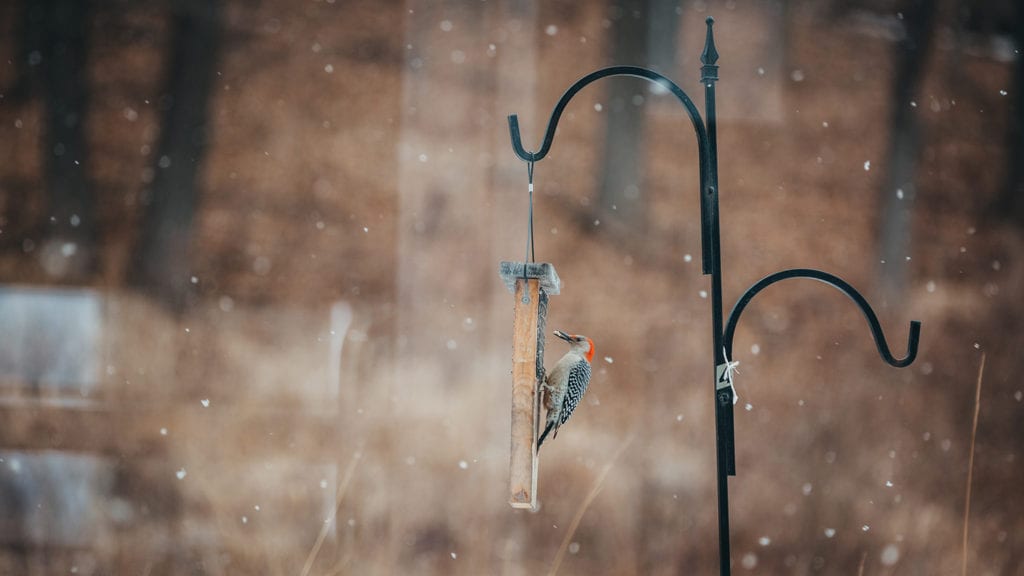 By Emily Roediger
By Emily Roediger
ICNC Naturalist
Maintaining bird feeders is a great way to bring feathered friends (and other wildlife) a little closer to your window in a variety of seasons. Though many bird species migrate away from Iowa in the fall to places that have more food sources over the winter, feeding birds in the wintertime can also bring a high level of activity to enjoy from the comfort of your home. Here are a few quick tips and tricks to get you started or improve what you already have set up:
- To attract a variety of species, provide their favorite food. Black oil sunflower seeds are the one food type that attracts the widest variety of species to feeders. Offering pure black oil sunflower seed in your feeder may even attract a wider variety of birds than seed mixtures.
- The place you do want variety is in the shape and type of feeders. Some birds prefer platform feeders, some prefer tube style feeders, and others prefer eating off of the ground.
- In addition to food, birds also need a place to feel safe. Many birds like to scope out and watch feeders from a shelter or cover area nearby. Bushes, shrubs and even brush piles nearby your feeders offer great cover for birds.
- Suet attracts a variety of woodpecker species, as well as nuthatches, chickadees and other birds.
- Hummingbird or nectar feeders are primarily used in our area in spring, summer and fall months. Leave your feeders out until you don’t see hummingbirds anymore to help them fuel up for migration — your feeder also won’t stop them from migrating.
- In addition to food, birds also need water. In cooler months, you may want to provide a heated water dish.
- Just like you wouldn’t want to drink, eat or take a bath from a dirty dish or tub, it’s also important to keep your bird feeders and baths clean to help the birds in your area stay healthy.
- Sometimes other critters besides the birds you want to see visit feeders. For mammals, like squirrels and deer, putting feeders where they are harder for other critters to access, like higher up, can sometimes minimize the impact on your feeders directly, while still allowing some of those critters to eat the leftovers birds sometimes drop on the ground.
Bird watching can be both frustrating and rewarding, but like many parts of nature, birds teach us a lot about the world around us. Your observations can help contribute to our knowledge of how nature works, how it changes and what stays the same. A couple of citizen science projects related to birds you can participate in, even from your home or as an individual, are Project FeederWatch and eBird. Project Feeder Watch also has other additional information about bird feeding tips and tricks.


 By Emily Roediger
By Emily Roediger
1 Comment. Leave new
Nice article Emily! Happy bird watching. Chirp Chirp.